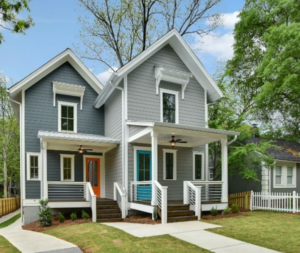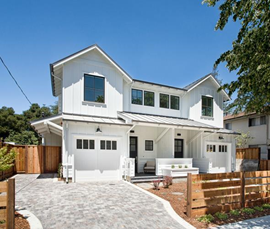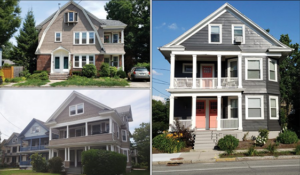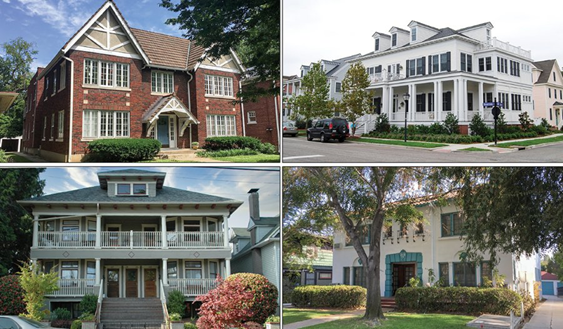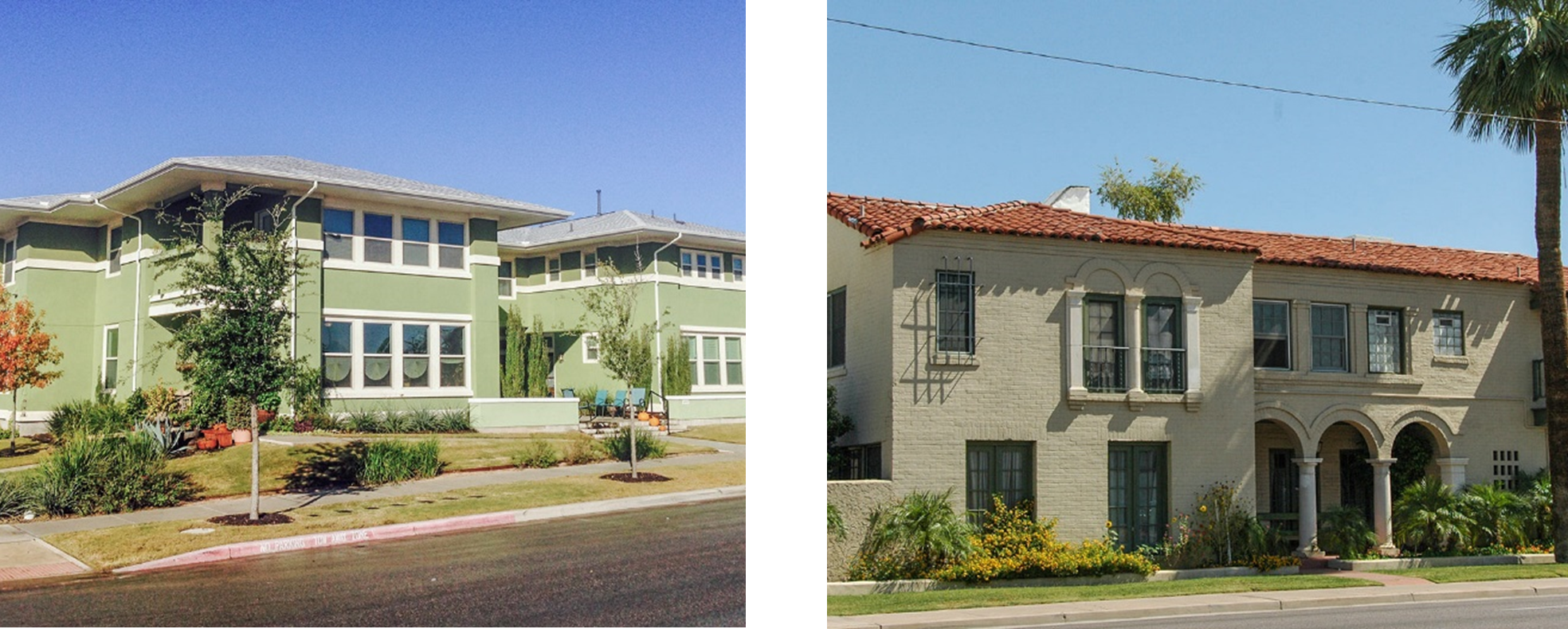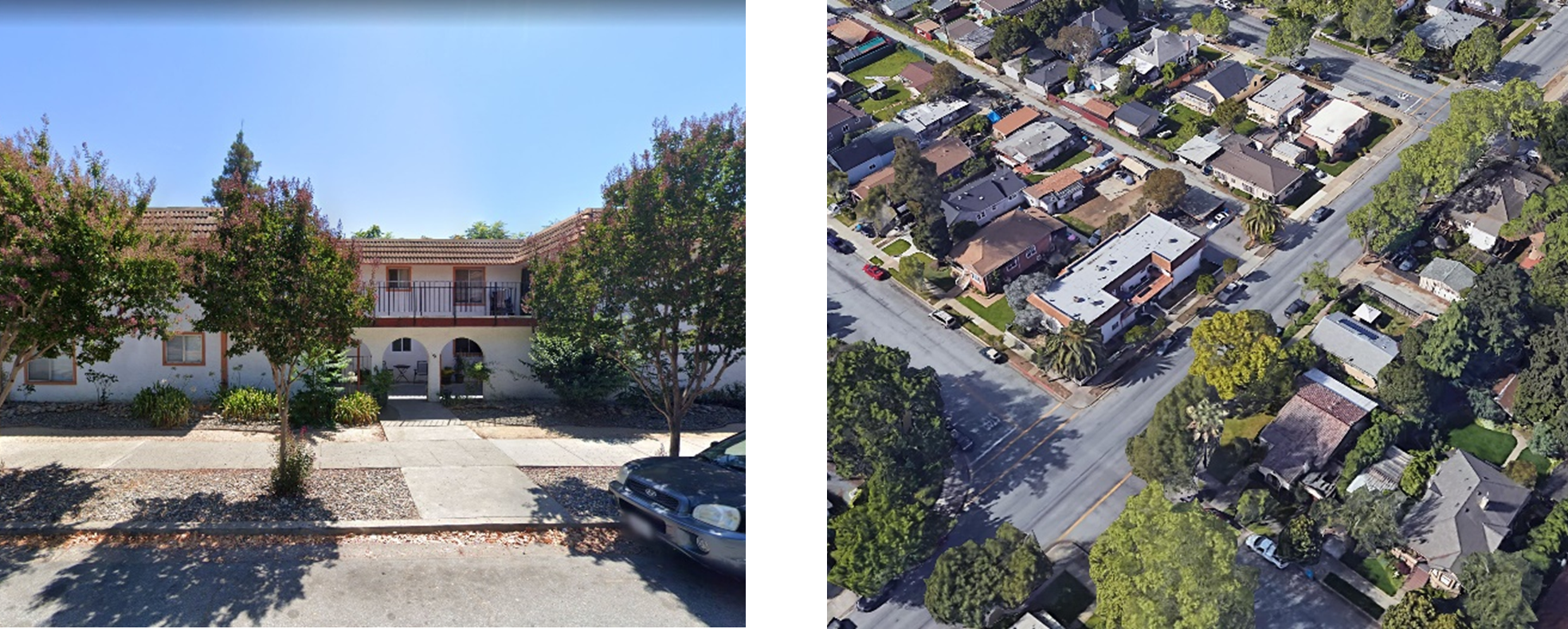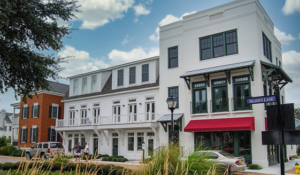According to Parolek & Nelson in their book “Missing Middle Housing,” middle housing is a range of multi-unit or clustered housing types compatible in scale with single-family homes that help meet the growing demand for walkable urban living, respond to shifting household demographics, and provide more housing choice at different price points (Parolek & Nelson, 2020). These housing types are identified as “missing” because, while they have been historically incorporated into neighborhoods across the U.S, there have been very few of these typologies built in the last 30-40 years, Today, due in part to the shift in housing demographics described above, many people are searching for a broader range of housing choices that are more affordable and located in contemporary, walkable neighborhoods.
Figure 31: Missing Middle Housing (Retrieved from Congress for New Urbanism)
The term “middle” has two meanings in the context of missing housing types. The first refers to the middle scale of buildings between single-family homes and large apartments or condos. These include duplexes, triplexes, fourplexes, courtyard apartments, bungalow courts, townhouses, live-work units, and small apartment buildings. Unlike other types of buildings that contain multiple units, missing-middle building types are compatible in scale with single-family homes. The second meaning of “middle” refers to affordability (Parolek & Nelson, 2020). Middle can be simplified into the building’s form and scale in relation to existing housing stock, as well as being affordable by design via lower land costs per housing unit, lower construction costs through typical type V simple wood construction, and simply being smaller units. The overall goal is to respond to shifting household and population demographics and provide increased housing choices at affordable price points.
Relevance to Housing in the San Joaquin Valley
Trends show a demographic shift in urban areas in preferred housing types, which is reshaping the housing market. Nationwide, the number and market share of new, single-family detached homes has fallen steadily since the great recession (Parolek & Nelson, 2020). One thing that remains consistent is the increasing desire to live in walkable communities, which typically requires housing options other than single-family detached.
Studies show that between 2018 and 2040, the percentage of homeowners under age 35 will decrease. More specifically, the overall homeownership rate is projected to fall from 64.3 percent in 2018 to between 62.6 percent and 64.0 percent in 2040 (Parolek & Nelson, 2020). This will result in a commensurate increase in demand for rental housing. The same studies suggest that these renters will be looking for a broad range of housing alternatives such as missing middle housing (MMH), which is predominately rental housing.
Since the 1970s, American household size has decreased, and more households comprise single individuals living alone. In contrast, the housing market has continued to produce predominantly single-family, detached housing geared toward larger households, offering increases in square footage and an even higher selling price. This disconnect between available myriad housing types and the trend toward renting has created an affordability and availability crisis for smaller households. While the trend nationwide is away from the suburban, auto-centric lifestyle and towards more centrally located, walkable, bikeable living environments that are close to transit and employment opportunities and near amenities such as shopping and restaurants, most communities in the Valley remain auto dependent. MMH is seen as an opportunity to provide affordable housing options for the more urbanized cities in the San Joaquin Valley.
Missing Middle Housing Characteristics
- Small footprint buildings
- Smaller units
- Single-family home characteristics
- Can be purchased or rented
- Fewer off-street parking spaces
- Lower perceived density
- Walkable
Missing Middle Housing Examples
- Duplex (side-by-side) (6-13 du/ac
- Duplex (stacked) (7-16 du/ac)
- Bungalow/Cottage Court (10-30 du/ac)
- Fourplex (stacked) (15-25 du/ac)
- Townhouse (10-22 du/ac)
- Multiplex – medium (10-50 du/ac)
- Courtyard building (20-60 du/ac)
- Live/work (10-20 du/ac)
Survey Results
While approximately 75 percent of respondents reported accessory dwelling units are allowed as a by-right housing option based on single-family zoning ordinances, only 15 percent reported fourplexes are allowed as by-right in their jurisdictions. In addition, only 18 percent of respondents reported duplexes and triplexes are allowed as a by-right housing option in their single-family zoning ordinances, 36 percent allowed live/work by-right, and 21 percent allowed cottage court/bungalows by-right. Respondents were also asked about their jurisdiction’s best tools for addressing housing supply and costs. Infill housing strategies ranked among the highest at 50 percent and allowing multiple units (e.g., duplexes, triplexes, fourplexes) by-right in single-family zones was supported by 21 percent.
Stakeholder Interviews
Building costs in the San Joaquin Valley were identified as a major challenge to housing production. Building costs are just as high in the Valley as in the Bay Area, which keeps rents high in affordable Valley developments. For-profit developers can’t build low-income housing under strict market conditions. The problem is difficult enough for housing authorities and non-profits. In particular, several interviewees cited prevailing wage requirements that are tied to Bay Area indices as problematic, considering unions don’t have a strong presence in the SJV.
Resources
Opticos Design, Missing Middle Housing.
City of Portland Bureau of Planning, The Infill Design Toolkit: Medium-Density Residential Development (December 2008).
Incremental Development Alliance, Helping locals strengthen their neighborhoods through small-scall real estate projects.
Master Builders Association of King and Snohomish Counties, MBAKS Housing Toolkit (October 2021).


